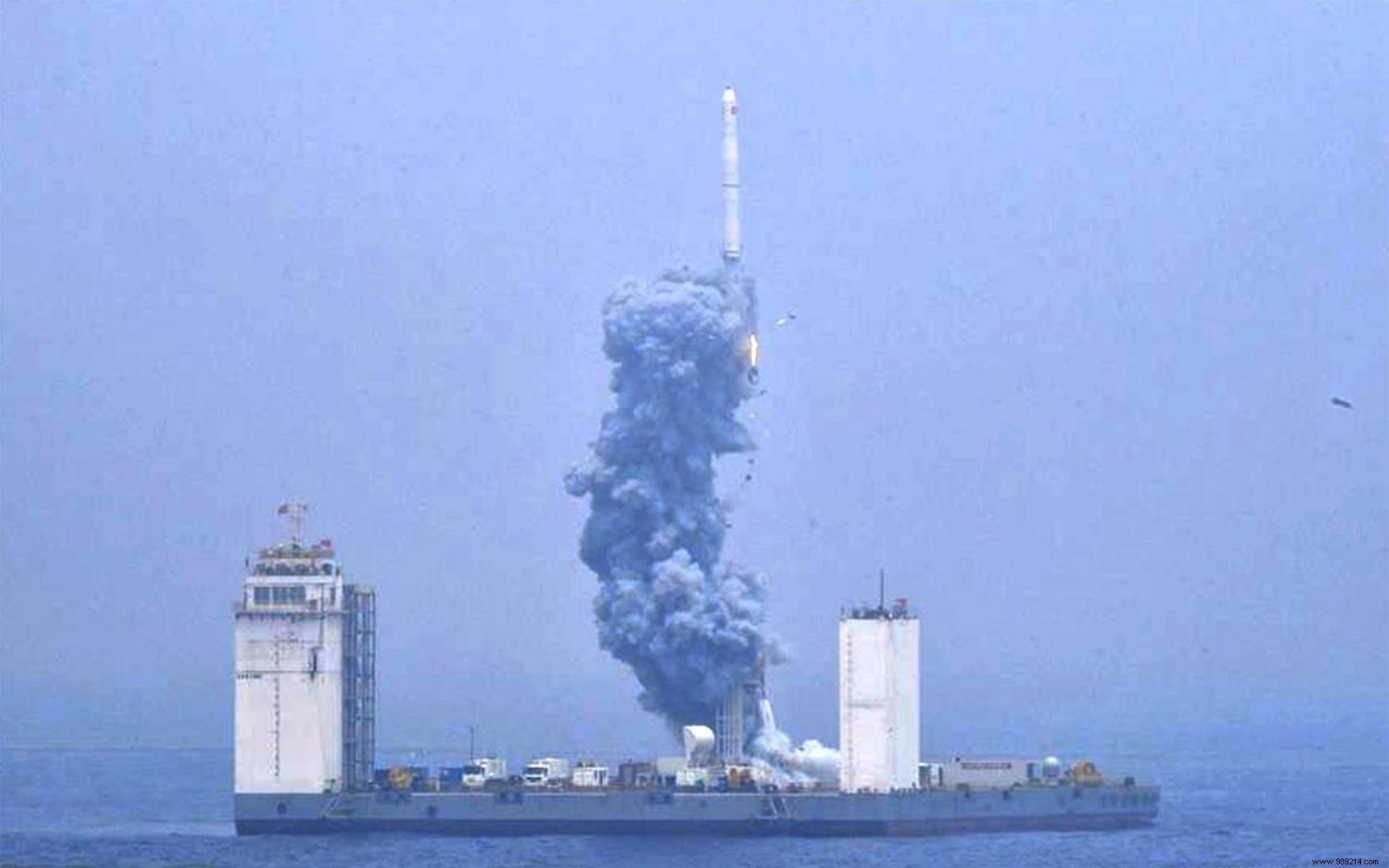China is looking to take full advantage of its new launch capability from its maritime platforms with at least three such missions scheduled for 2021.
China, which today presents itself as a first-rate space power, currently has four launch bases spread over its immense territory, including that of Jiuquan, the first and the most important of these sites. However, the country also intends to rely on maritime platforms in the future.
These launches operated directly at sea have several advantages. The flexible positioning of the site, on the one hand, makes it possible to choose a trajectory that does not fly over other countries . This approach also guarantees that the first stages of the rockets concerned (boosters) do not fall back to earth, threatening in the process inhabited areas, as was the case several times in China. Finally, a mobile maritime platform allows launch as close as possible to the equator where the rotation speed of the Earth is the highest , which implies a reduction in fuel requirements to reach space.
China has done this before. The first time was in June 2019. On this occasion, the Chinese Academy of Solid Propulsion Technology (AASPT) released seven satellites into space with a Long March 11 light launch vehicle that took off from a launch pad floating in the Yellow Sea. A second launch at sea (still with a Long March 11) was then attempted and successful in September 2020, this time allowing the release of nine satellites into space.

After building new facilities on the coast of eastern China's Shandong province, the country is now looking to boost these sea launches. Li Tongyu, of the China Academy of Launch Vehicle Technology (CALT) and Commander-in-Chief of the Long March 11, the country plans three to four such launches this year.
"We have overcome all technical issues regarding the various launch modes, including land and sea launches " , he added. “We will gradually apply these technologies in the future to ensure launches are safe, reliable and cost-effective “.
As you can see below, these missions involve "cold" launches, like some missiles. In other words, the rocket is first ejected from its tube by a gas generator, before igniting its engines. The launch is also remotely controlled from a nearby ship so as to keep mission personnel under cover.
Still according to Li Tongyu, the China Academy of Launch Vehicle Technology (CALT) would also develop a new, more powerful Long March 11 . This variant will use a larger and wider first stage (2.65 m in diameter) and will be able to send up to 1,500 kilos of payload to an altitude of 700 kilometers (sun-synchronous orbit). Its first launch is scheduled for 2022.
Finally, let's remember that the China Aerospace Science and Technology Corporation (CASC), the main Chinese space contractor, plans more than forty launches this year. Among these notable missions will be the launch of a first module of the future Chinese space station, but also manned flights.